-
 Bitcoin
Bitcoin $83,456.2183
-2.10% -
 Ethereum
Ethereum $1,581.6766
-3.19% -
 Tether USDt
Tether USDt $1.0000
0.01% -
 XRP
XRP $2.0754
-3.06% -
 BNB
BNB $581.5622
-0.87% -
 Solana
Solana $125.4498
-3.64% -
 USDC
USDC $1.0000
0.01% -
 TRON
TRON $0.2517
-0.62% -
 Dogecoin
Dogecoin $0.1544
-3.43% -
 Cardano
Cardano $0.6075
-5.31% -
 UNUS SED LEO
UNUS SED LEO $9.3772
-0.61% -
 Chainlink
Chainlink $12.2969
-2.78% -
 Avalanche
Avalanche $18.7882
-6.65% -
 Stellar
Stellar $0.2347
-2.65% -
 Toncoin
Toncoin $2.8697
-1.77% -
 Shiba Inu
Shiba Inu $0.0...01167
-2.16% -
 Sui
Sui $2.0829
-4.50% -
 Hedera
Hedera $0.1570
-5.62% -
 Bitcoin Cash
Bitcoin Cash $319.7787
-2.88% -
 Litecoin
Litecoin $75.6696
-3.49% -
 Polkadot
Polkadot $3.5301
-3.64% -
 Dai
Dai $1.0000
0.01% -
 Bitget Token
Bitget Token $4.2258
-1.94% -
 Hyperliquid
Hyperliquid $15.0950
-6.64% -
 Ethena USDe
Ethena USDe $0.9991
0.00% -
 Pi
Pi $0.6072
-18.52% -
 Monero
Monero $216.6818
2.44% -
 Uniswap
Uniswap $5.1792
-3.47% -
 OKB
OKB $52.2750
0.70% -
 Pepe
Pepe $0.0...07035
-3.66%
What is the storage proof mechanism of IPFS mining?
IPFS uses sophisticated storage proof mechanisms, including simple file existence proofs, replication proofs, and zk-SNARKs, to verify data availability and incentivize honest node participation, ensuring data integrity within its decentralized network.
Mar 23, 2025 at 10:07 pm
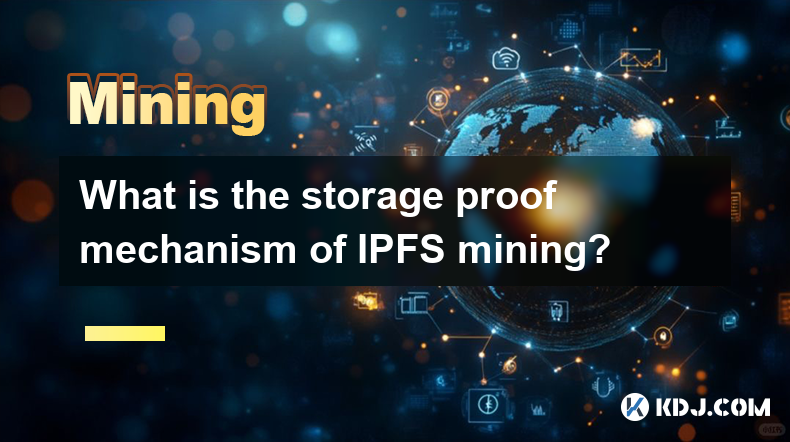
Key Points:
- IPFS storage proof mechanisms verify data availability and ensure nodes are genuinely storing files.
- Several proof mechanisms exist, each with strengths and weaknesses. These include simple file existence proofs, more sophisticated replication proofs, and the increasingly prominent zk-SNARKs.
- The complexity of these proofs impacts the resources required for both storage providers and the network itself.
- Incentivizing honest storage through these mechanisms is crucial for IPFS's success.
- Understanding the nuances of these mechanisms is vital for participants in IPFS mining.
What is the storage proof mechanism of IPFS mining?
IPFS (InterPlanetary File System) is a decentralized storage network. Unlike centralized cloud storage, IPFS relies on a vast network of nodes to store and distribute data. To ensure data integrity and incentivize participation, IPFS employs sophisticated storage proof mechanisms. These mechanisms verify that nodes are honestly storing the data they claim to have, preventing malicious actors from falsely claiming storage space.
The core concept behind IPFS storage proofs revolves around proving the possession of data without revealing the data itself. This is crucial for maintaining user privacy and data security. Different approaches achieve this goal with varying degrees of efficiency and complexity.
Types of Storage Proof Mechanisms in IPFS
IPFS employs various storage proof mechanisms, each with unique characteristics. The choice of mechanism often depends on factors such as the desired level of security, computational overhead, and the overall network architecture.
- Simple File Existence Proofs: This is a basic approach where a node proves it possesses a specific file by providing a cryptographic hash of the file. This hash acts as a fingerprint, uniquely identifying the file. If the hash matches, it's a strong indication that the node possesses the file. However, it doesn't prove the file's integrity or the node's commitment to storing it long-term.
- Replication Proofs: These go beyond simple existence proofs by verifying that multiple nodes store the same data. This increases data redundancy and resilience against node failures or malicious actors. Replication proofs often involve cryptographic techniques to ensure that nodes are genuinely storing identical copies without colluding to cheat the system. The specific implementation can vary, impacting complexity and efficiency.
- Zero-Knowledge Succinct Non-Interactive Arguments of Knowledge (zk-SNARKs): These advanced cryptographic techniques allow a node to prove possession of data without revealing the data itself. zk-SNARKs are highly efficient and secure, making them suitable for large-scale decentralized storage networks. However, they are computationally expensive to generate, requiring significant resources from both the prover (the node) and the verifier (the network). Their increasing adoption in IPFS highlights the network's focus on scalability and security.
The Role of Incentives in IPFS Storage Proof
The effectiveness of IPFS storage proof mechanisms relies heavily on proper incentive structures. Nodes are rewarded for honestly storing and making data available. These rewards often come in the form of cryptocurrency tokens, creating a financial incentive to maintain data integrity and availability. The specific incentive mechanisms can be complex, often involving reputation systems and slashing mechanisms to penalize malicious or negligent behavior.
Challenges and Future Directions
While IPFS storage proof mechanisms have made significant progress, challenges remain. The computational cost of generating and verifying proofs, particularly with advanced techniques like zk-SNARKs, is a significant hurdle. Research is ongoing to develop more efficient and scalable proof systems. Furthermore, balancing the need for security and privacy with the efficiency of the network is a constant challenge.
Common Questions and Answers:
Q: How does IPFS ensure data availability?
A: IPFS utilizes various storage proof mechanisms, such as replication proofs and zk-SNARKs, to verify that nodes are genuinely storing the data they claim to have. This ensures data availability even if some nodes fail or become malicious.
Q: What are the benefits of using zk-SNARKs in IPFS?
A: zk-SNARKs offer high security and efficiency in verifying data possession without revealing the data itself. This is crucial for maintaining user privacy and data security in a decentralized storage network. However, they are computationally intensive.
Q: How are miners incentivized to participate in IPFS?
A: Miners are typically incentivized through cryptocurrency rewards for storing and providing access to data. The amount of reward often depends on factors such as storage capacity, data availability, and network contributions.
Q: What are the differences between simple file existence proofs and replication proofs?
A: Simple file existence proofs only verify the presence of a file through its hash. Replication proofs go further, verifying that multiple nodes possess identical copies, enhancing redundancy and resilience against node failures or malicious attacks.
Q: What is the future of storage proof mechanisms in IPFS?
A: Future developments likely involve refining existing mechanisms for greater efficiency and scalability, exploring new cryptographic techniques, and adapting to the evolving needs of a growing decentralized storage network. Research into lighter-weight proofs and improved incentive mechanisms will continue.
Disclaimer:info@kdj.com
The information provided is not trading advice. kdj.com does not assume any responsibility for any investments made based on the information provided in this article. Cryptocurrencies are highly volatile and it is highly recommended that you invest with caution after thorough research!
If you believe that the content used on this website infringes your copyright, please contact us immediately (info@kdj.com) and we will delete it promptly.
- YEREVAN (CoinChapter.com) — Bo Hines Confirms Trump Administration Is Considering Tariff Revenues to Fund a National Bitcoin Reserve
- 2025-04-16 12:15:12
- Ecosystem Tokens Like WhiteBIT Token (WBT) Are Drawing Increased Attention
- 2025-04-16 12:15:12
- The U.S. Dollar Index Remains Under Pressure as Donald Trump's Tariffs Push Investors to Other Currencies
- 2025-04-16 12:10:13
- Pa. man could face 6 years in prison for underreporting millions of dollars earned from selling CryptoPunks NFTs
- 2025-04-16 12:10:13
- BlockDAG Beta Testnet Goes Live with $60K in Real Rewards
- 2025-04-16 12:05:14
- BlockDAG Emerges as the Leading Crypto to Buy Now, Combining a 600% Presale Bonus with Proven Tech
- 2025-04-16 12:05:14
Related knowledge
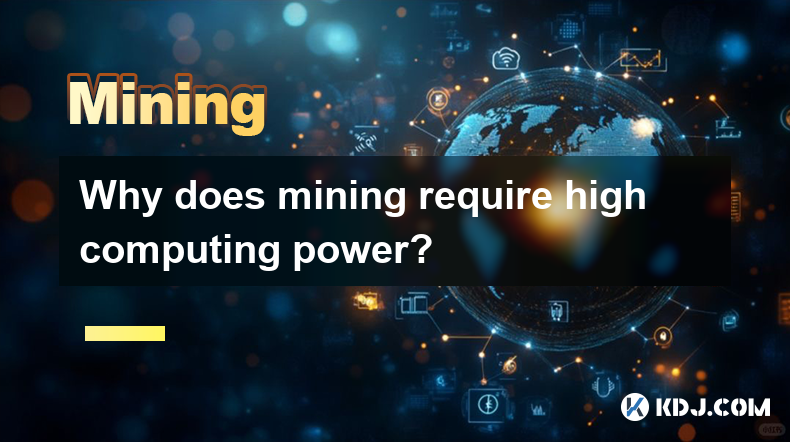
Why does mining require high computing power?
Apr 16,2025 at 12:07pm
Mining in the cryptocurrency world, particularly in the case of Bitcoin and other Proof of Work (PoW) cryptocurrencies, is a process that demands significant computational resources. This article delves into the reasons behind this high demand for computing power, exploring the technical intricacies and the underlying principles that necessitate such re...
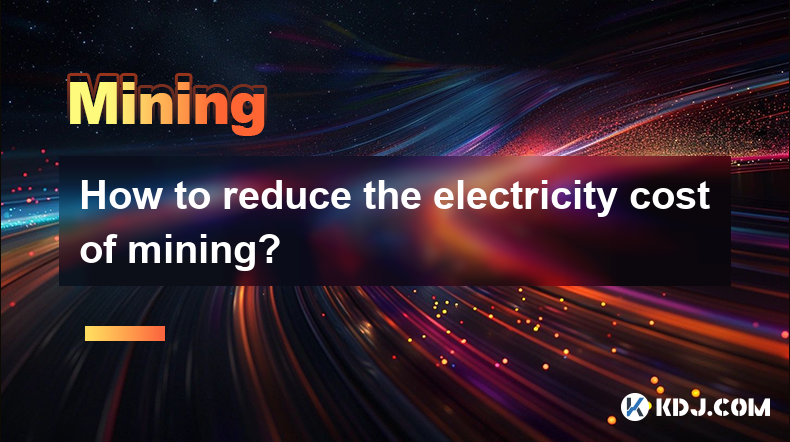
How to reduce the electricity cost of mining?
Apr 16,2025 at 08:42am
Mining cryptocurrencies, particularly Bitcoin, is an energy-intensive process that can lead to significant electricity costs. However, there are several strategies that miners can employ to reduce these expenses and make their operations more cost-effective. In this article, we will explore various methods to minimize the electricity cost of mining. Cho...
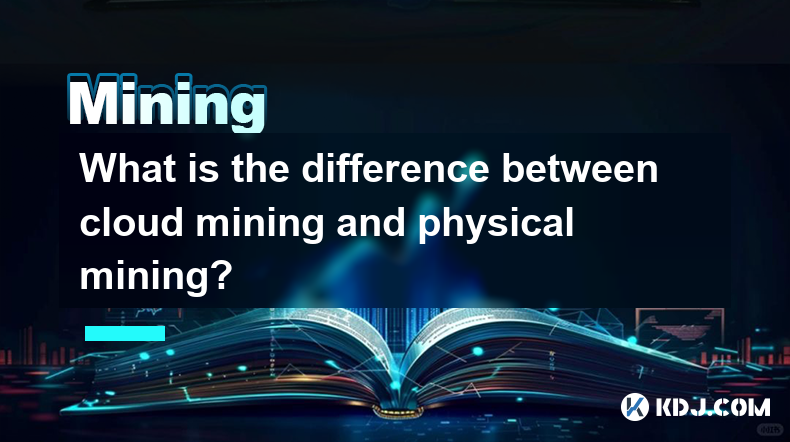
What is the difference between cloud mining and physical mining?
Apr 16,2025 at 01:49am
What is the difference between cloud mining and physical mining? In the world of cryptocurrencies, mining is the process by which new coins are generated and transactions are verified and added to the blockchain. There are two primary methods of mining: cloud mining and physical mining. Understanding the differences between these two approaches can help...
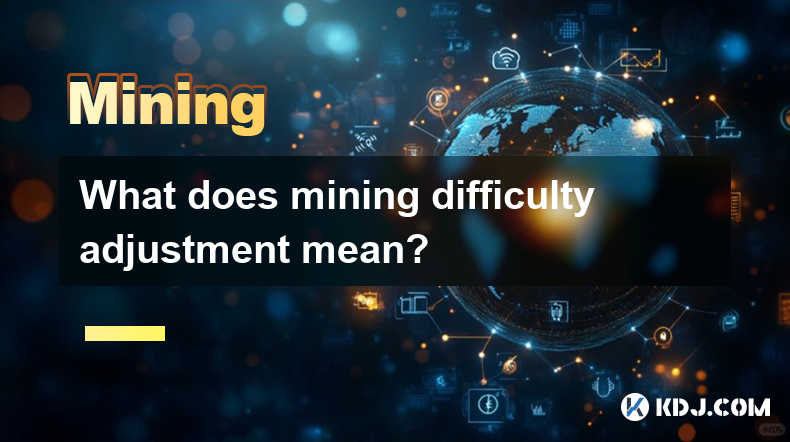
What does mining difficulty adjustment mean?
Apr 16,2025 at 12:42am
What does mining difficulty adjustment mean? Mining difficulty adjustment is a crucial mechanism in blockchain networks, particularly in Proof of Work (PoW) systems like Bitcoin. It ensures that the rate at which new blocks are added to the blockchain remains consistent, despite fluctuations in the total computational power (hash rate) of the network. T...

How to choose a suitable cryptocurrency for mining?
Apr 16,2025 at 10:15am
Choosing a suitable cryptocurrency for mining involves several considerations that can impact your profitability and efficiency. Mining cryptocurrencies can be a rewarding venture, but it requires careful planning and research. In this article, we will explore the key factors to consider when selecting a cryptocurrency for mining, ensuring you make an i...

What hardware configurations are required for GPU mining?
Apr 16,2025 at 09:21am
GPU mining has become a popular method for cryptocurrency enthusiasts to mine various cryptocurrencies, such as Ethereum, Ravencoin, and others. To successfully engage in GPU mining, it is essential to understand the hardware configurations required to maximize efficiency and profitability. This article will delve into the specifics of what you need to ...

Why does mining require high computing power?
Apr 16,2025 at 12:07pm
Mining in the cryptocurrency world, particularly in the case of Bitcoin and other Proof of Work (PoW) cryptocurrencies, is a process that demands significant computational resources. This article delves into the reasons behind this high demand for computing power, exploring the technical intricacies and the underlying principles that necessitate such re...

How to reduce the electricity cost of mining?
Apr 16,2025 at 08:42am
Mining cryptocurrencies, particularly Bitcoin, is an energy-intensive process that can lead to significant electricity costs. However, there are several strategies that miners can employ to reduce these expenses and make their operations more cost-effective. In this article, we will explore various methods to minimize the electricity cost of mining. Cho...

What is the difference between cloud mining and physical mining?
Apr 16,2025 at 01:49am
What is the difference between cloud mining and physical mining? In the world of cryptocurrencies, mining is the process by which new coins are generated and transactions are verified and added to the blockchain. There are two primary methods of mining: cloud mining and physical mining. Understanding the differences between these two approaches can help...

What does mining difficulty adjustment mean?
Apr 16,2025 at 12:42am
What does mining difficulty adjustment mean? Mining difficulty adjustment is a crucial mechanism in blockchain networks, particularly in Proof of Work (PoW) systems like Bitcoin. It ensures that the rate at which new blocks are added to the blockchain remains consistent, despite fluctuations in the total computational power (hash rate) of the network. T...

How to choose a suitable cryptocurrency for mining?
Apr 16,2025 at 10:15am
Choosing a suitable cryptocurrency for mining involves several considerations that can impact your profitability and efficiency. Mining cryptocurrencies can be a rewarding venture, but it requires careful planning and research. In this article, we will explore the key factors to consider when selecting a cryptocurrency for mining, ensuring you make an i...

What hardware configurations are required for GPU mining?
Apr 16,2025 at 09:21am
GPU mining has become a popular method for cryptocurrency enthusiasts to mine various cryptocurrencies, such as Ethereum, Ravencoin, and others. To successfully engage in GPU mining, it is essential to understand the hardware configurations required to maximize efficiency and profitability. This article will delve into the specifics of what you need to ...
See all articles























































































